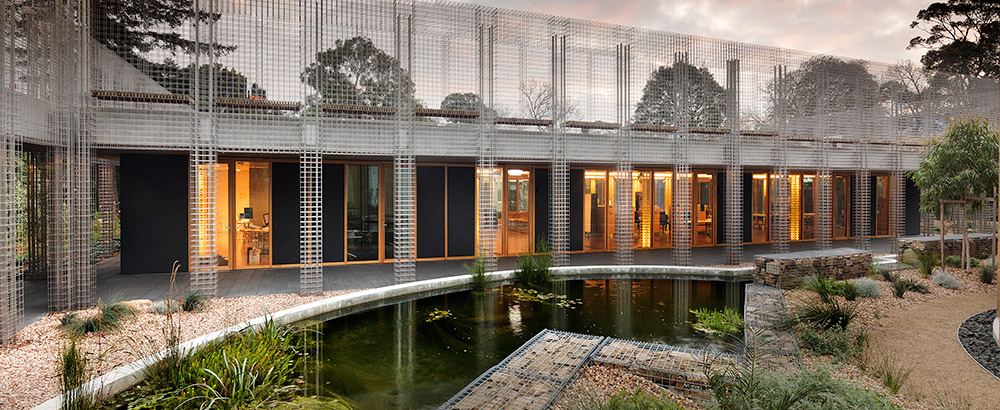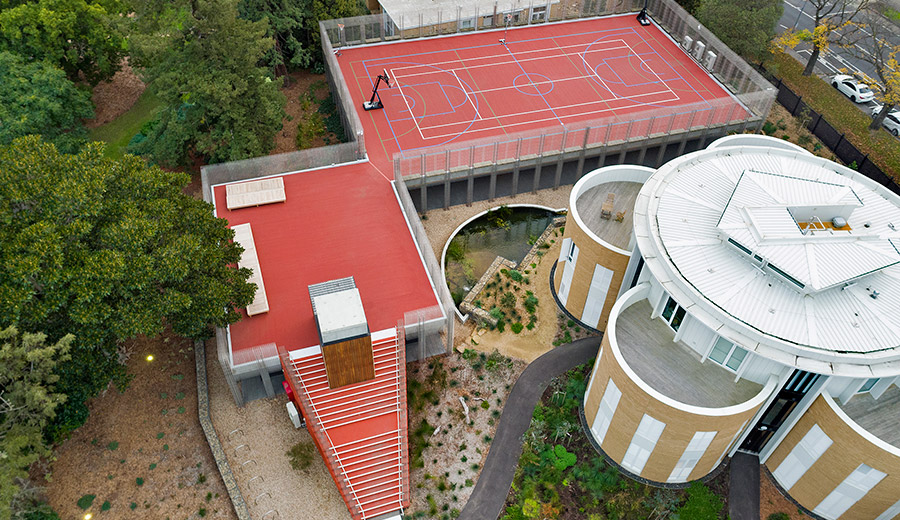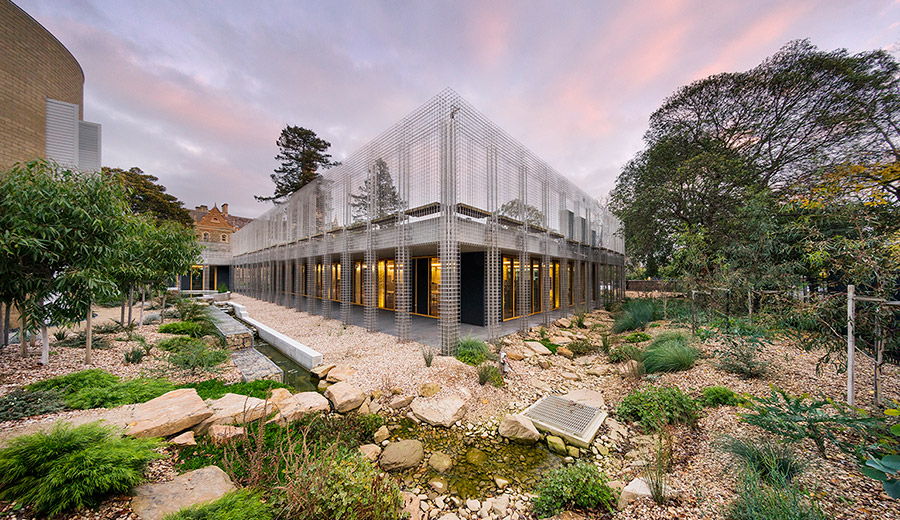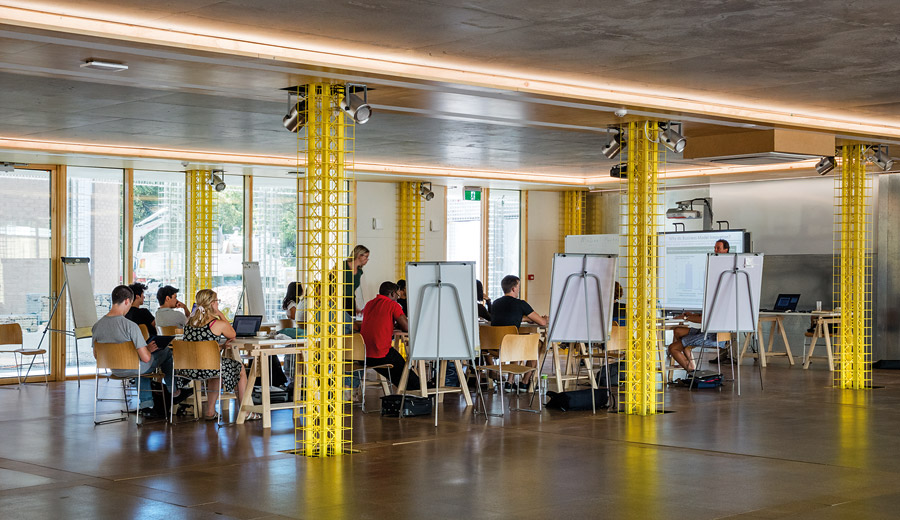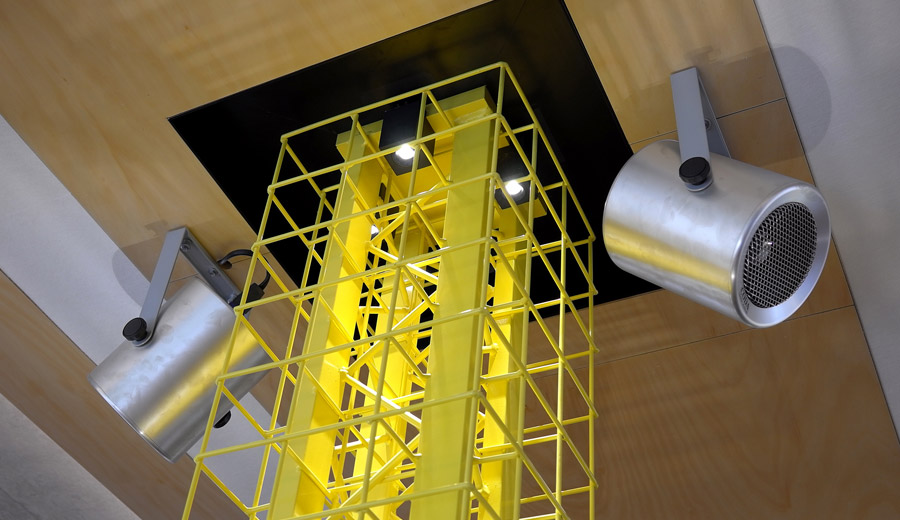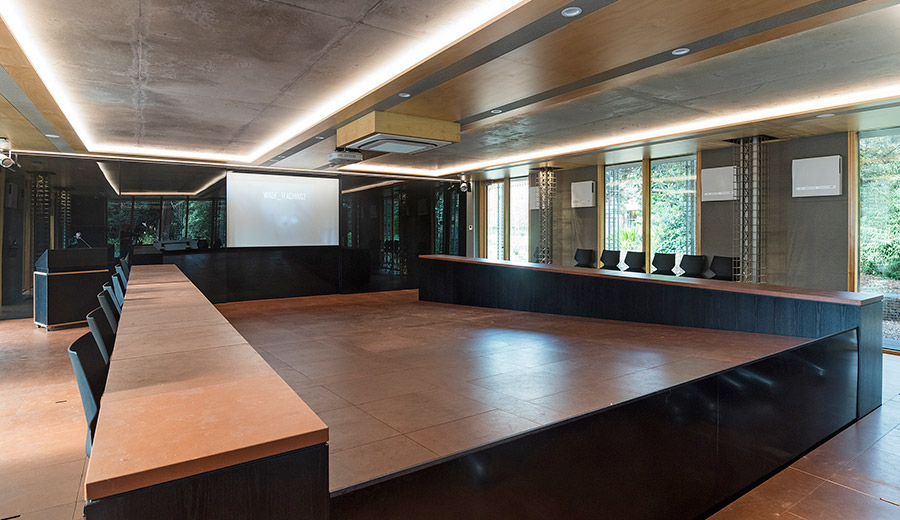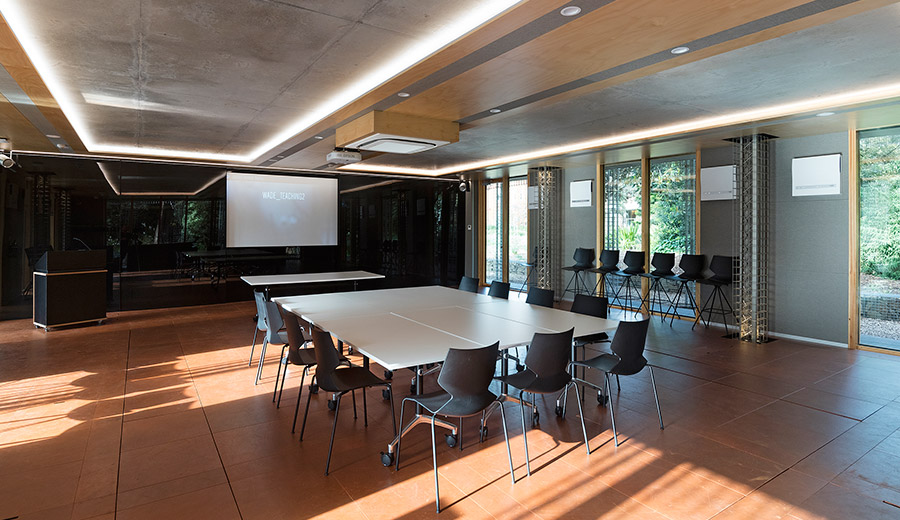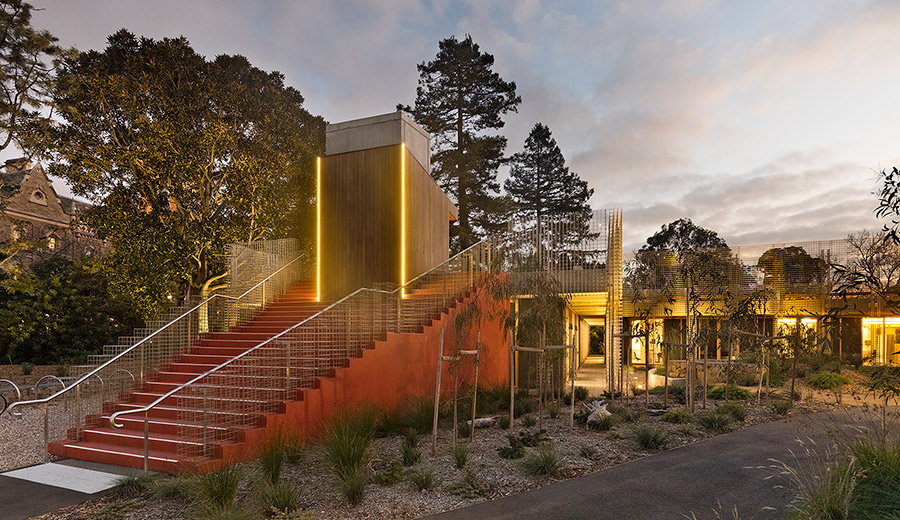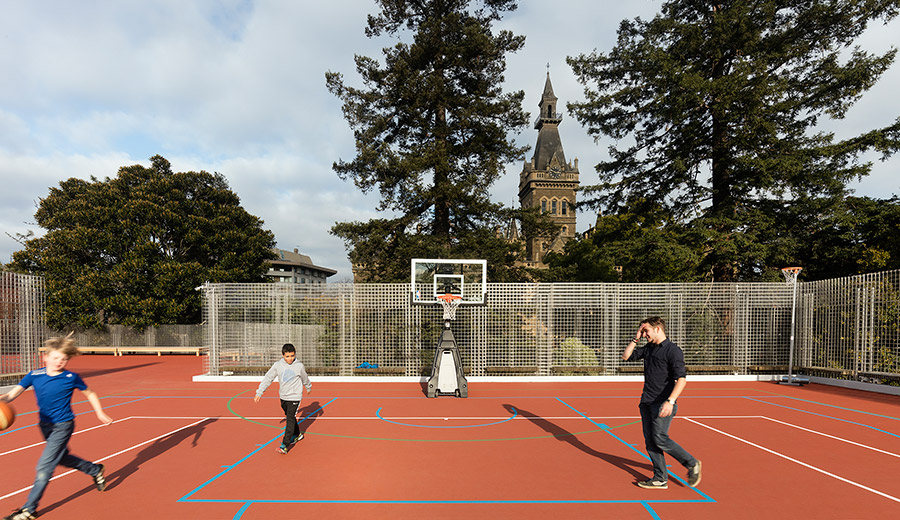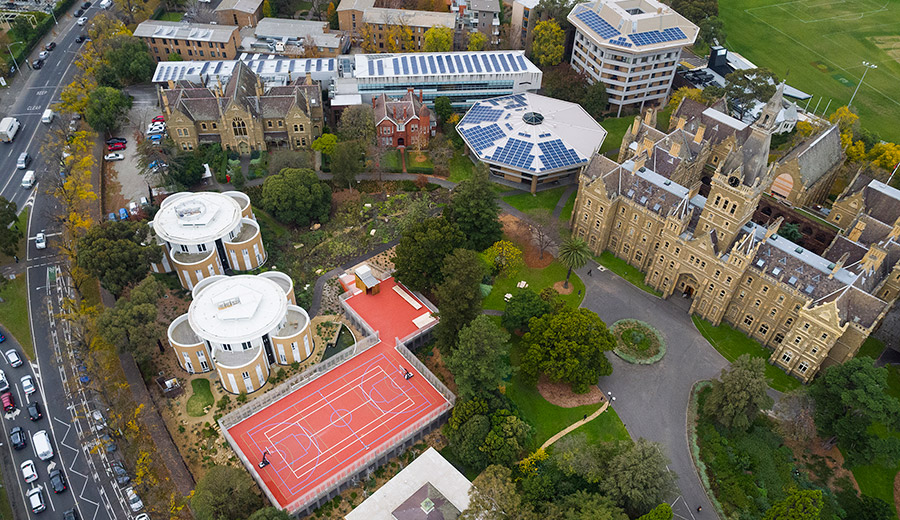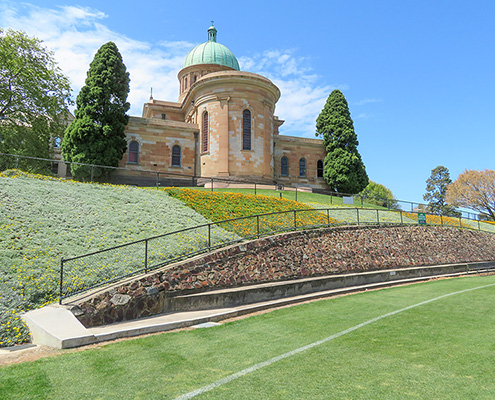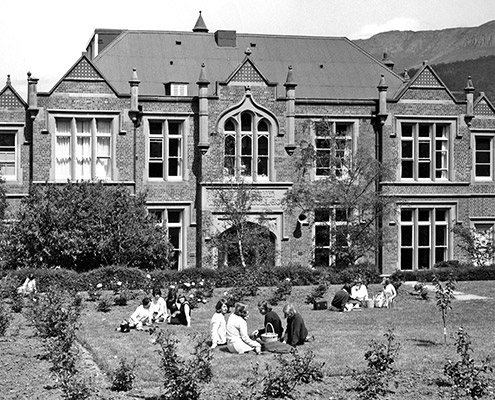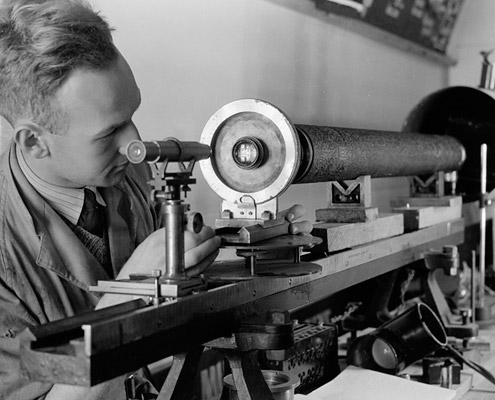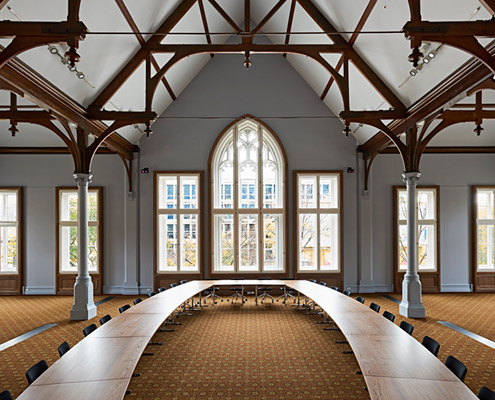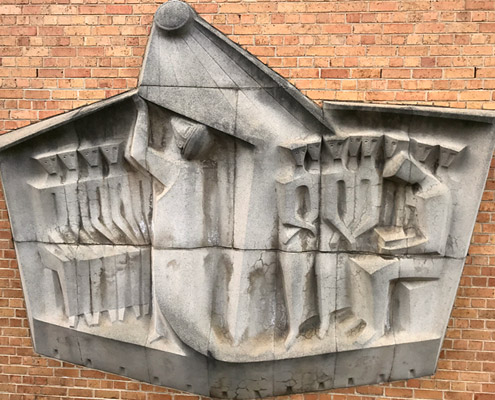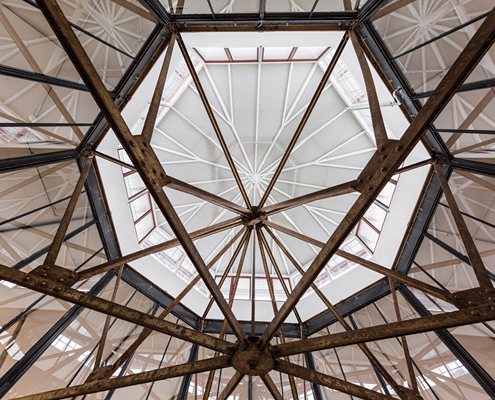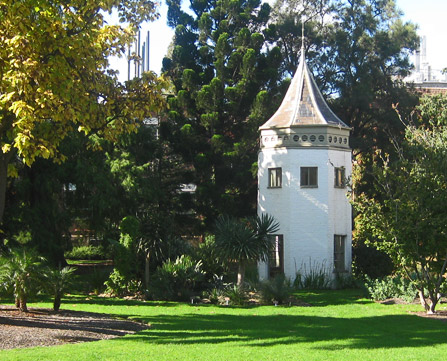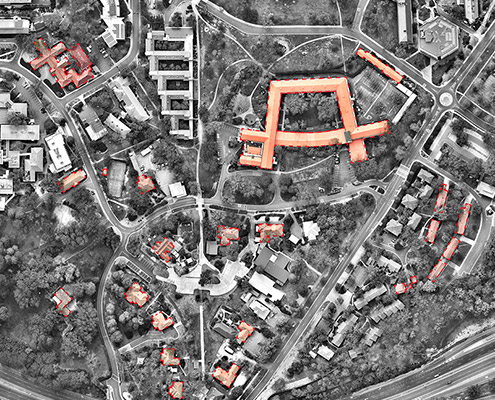
Designed to embody the values the Wade Institute strives to impart to its students of the Masters of Entrepreneurship — creativity and sustainability — Lovell Chen’s new teaching building in the grounds of Ormond College presents a series of contrasts. By turns it is serious and celebratory, garden pavilion and university cloister, structurally innovative yet simple in form. The building combines unconventional teaching spaces with a roof-top tennis court, a Passive House approach, flexibility, and a coherent design response to the complex architectural context of its site.
Taking the teaching model of the Institute as a starting point for the construction process, we worked collaboratively, joined by industrial designer Joe Iacono of Design Sense, teaching consultant Peter Jamieson and structural engineer Phil Gardner of Irwinconsult. Design Sense constructed the teaching building. The adjacent residential building (a near replica of the Graduate Centre) was constructed concurrently by Maben/Macrobuild.
The L-shaped teaching building provides two main working spaces, with offices and ancillary rooms, all on one level. One of the tennis courts it replaces has been ‘lifted’, creating usable space between two massive exposed concrete slabs — the roof and floor of the building. Both slabs slope gently, gathering rainwater from the court. The upper slab seems to defy gravity, supported on seemingly too-light steel mesh columns inside the building, and tied to the ground at its perimeter by further mesh columns. Full height glazing surrounds the teaching spaces, making the building transparent.
The feeling inside is a surprising combination of tranquility and energized possibility. The minimal columns and the glazing contribute to the feeling of lightness, while the Passivhaus approach to detailing, plus the perimeter walkway created by the extended roof slab, bring a sense of protection. Passivhaus focuses on achieving low energy usage through high levels of insulation and building seal, avoiding heat/cold bridges and using mechanical ventilation heat recovery. It requires precise detailing but delivers an extraordinarily positive experience for users.
Adaptable to multiple format or use, the larger teaching space is open plan. The end wall is for projection, and the floor is finished in cork. By contrast, the smaller seminar room is more sumptuous, though deceptively simple at first glance. Here, the walls are triple glazed and the floor is covered in leather. One half of the floor can be raised by hydraulic lifts to form a seating rake. Raisable benches have multiple uses.
“The power of a space comes from the people that occupy it” Kai Chen
The Wade Institute is the most recent addition to the family of buildings in the grounds of Ormond College that includes a distinguished series of structures from the 1950s and 60s. It sits between the Master’s Lodge (1958) designed by Sir Roy Grounds, and the Graduate Centre, completed by Lovell Chen in 2014.
Designed and constructed to Passive House principles
photos : John Gollings
ceiling detail : Jane Joyce

